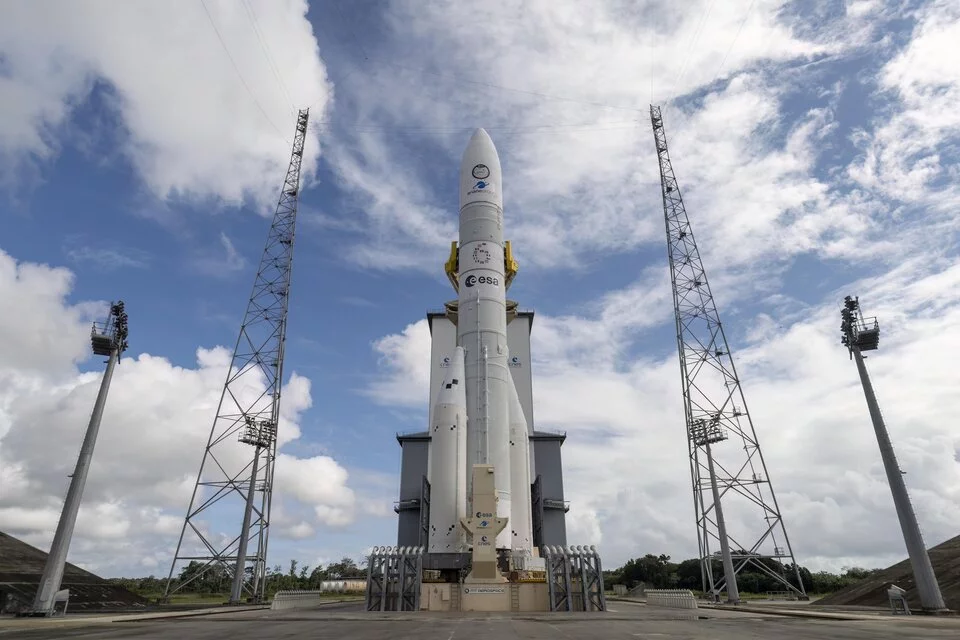Europe will be back in the heavy lift rocket business on July 9, 2024 when the Ariane 6 lifts off on its maiden flight carrying almost a dozen satellites and experiments. The launch window at Kourou, French Guiana opens at 2:00 pm EDT. Here's how to watch.
ESA has been looking forward to the launch of Ariane 6 for quite a long time. First conceived as a replacement for its workhorse Ariane 5 about 15 years ago, it was supposed to fly in 2020, but today it remains on the ground even though Ariane 5 retired a year ago.
That's scheduled to change on Tuesday when the first Ariane 6 is scheduled to take off from equatorial South America. Expected to last two hours, 51 minus, and 40 seconds, the flight has a crowded checklist. Not only is it intended to show that Ariane 6 can fly, it will also demonstrate the ability of the second stage to refire up to four times. The purpose of this is to place different payloads in different orbits and to reduce space debris by ensuring that the stage can be made to either reenter the Earth's atmosphere to burn up or boost into a graveyard orbit set aside for defunct spacecraft.
In addition, the Ariane six will carry 11 international payloads. These include several satellites, experiments that will remain aboard the rocket for the entire mission as they send back telemetry, and two capsules that are designed to reenter the Earth's atmosphere intact.
One of these is the Nyx Bikini, which will send back data to help engineers build more effective reentry capsules. The other is SpaceCase SCX-01, which uses a heat shield made of carbon resin instead of the phenol plastics used in conventional shields. According to the makers, this resin can be used in both the structure of the capsule as well as the shield, allowing for less weight and greater strength.
According to ESA, the first flight of Ariane 6 will be in the A62 medium-lift launch vehicle configuration, which has two solid rocket boosters strapped on the first stage. Along with the Vulcain 2.1 engine burning liquid hydrogen and oxygen, these will provide the 207-ft (63-m) rocket with a total of 350 tonnes of thrust as it leaves the pad. After separation, the second stage will ignite its Vinci engine, sending it and its payload of up to 22,820 lb (10,350 kg) into low Earth orbit.

The A64 configuration with four solid rocket boosters can carry larger payloads into higher orbits, including deep space trajectories.
If successful, Ariane 6 could lead to a reinvigoration of Europe's heavy launch capabilities, with 11 flights possible per year at lower cost than Ariane 5. However, this could be a case of too little too late as SpaceX regularly flies rockets with bigger payloads at lower costs and many other companies are seeking to emulate their reusable vehicles.
If you wish to see for yourself, the launch will be carried live on ESA Web TV or you can watch the embedded feed above. French and German language feeds are also available or, if you like your launches neat, there's a commentless feed.
Source: ESA








